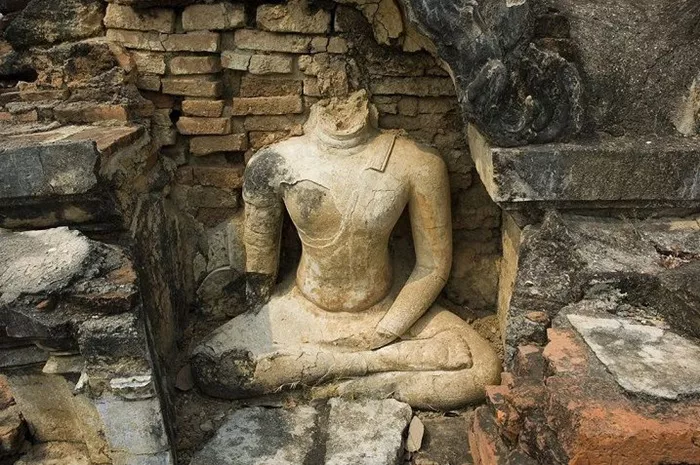In a major archaeological discovery, a headless Buddha statue and three ancient caves have been found near the Kadri Manjunatha Temple.
The discovery, confirmed and documented by T. Murugeshi, retired associate professor of ancient history and archaeology at the Hindustan-Rajasthan Royal Society College, Silva, provides important clues to the Buddhist heritage of the region.
The Buddha statue, which dates back to the 4th to 6th century AD, was originally found inside the temple tank, which was then abandoned. With the permission of the temple administrator Arun Kumar, the rusted Buddha statue was carefully removed for detailed study.
Although the head and right hand of the Buddha statue are missing, the Buddha still retains its serene charm in the lotus posture, with both hands in the meditation mudra. The outline of the uttariya (upper garment) is faintly visible on the chest. Professor Murugeshi
identified the Buddha statue as a Mahayana meditative Buddha statue and pointed out that its stylistic features are consistent with Buddhist iconography in the Kadri region. The Buddha statue, which is about 68 cm tall and 48 cm wide, is believed to have been the presiding deity of the site before the transition to Shaivism.
Along with the discovery of the Buddha statue, three rock caves were discovered on the east side of the Kadri pool. These caves were carved out of laterite above ground level and their structural design resembles the residences of Buddhist monks.
Cave 1: With a semicircular porthole entrance, 8-foot-high chamber, lamp niches, the appearance is similar to that of a megalithic dolmen.
Cave 2 and Cave 3: Both have high bases, two square entrances and square inner chambers. All the caves have sloping canopies with drainage holes, suggesting a practical design for monsoon residence.
Professor Murugesh stressed that Kadri was an important Buddhist center until the 10th century AD, as evidenced by the inscription of Kundavarma, King of Arupa, on the Lokeshwara statue in the Kadri temple.
The site transitioned from Mahayana Buddhism to Vajrayana Buddhism and was eventually influenced by Nathana in the 11th century.
These discoveries not only confirm the ancient Buddhist roots of Kadri but also deepen the understanding of its historical evolution and cultural significance.

